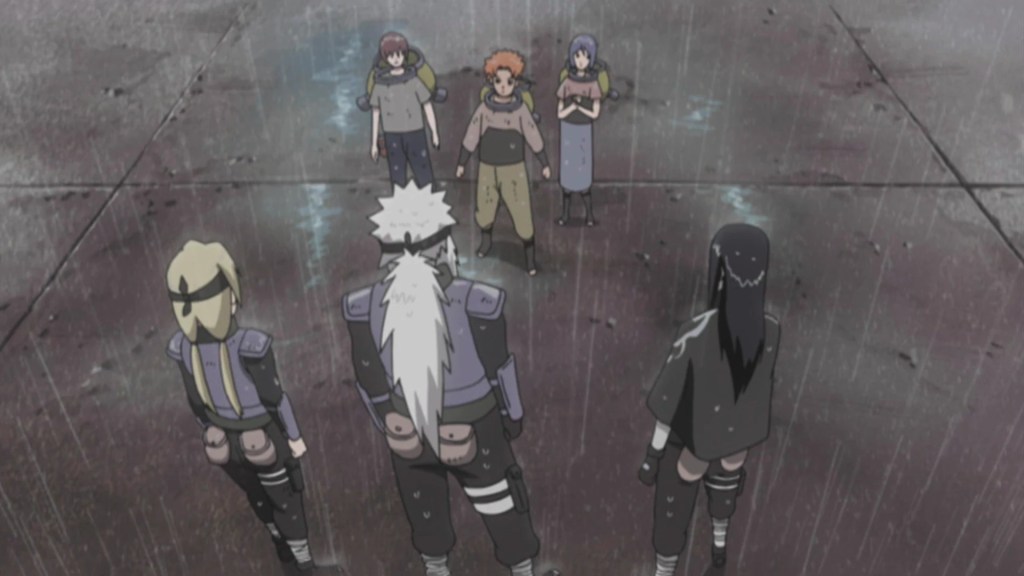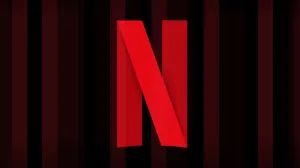One of Naruto Shippuden’s best episodes is incredible for all the wrong reasons. In fact, it’s painfully contradictory. You can put emphasis on the “Pain” since the episode in question is “The Tale of Jiraiya The Gallant“: a heartbreaking reminiscence of the shinobi ideal as Jiraiya passes away at the hands of the orphans he raised. Something particularly peculiar about the episode is how it’s really not supposed to be thought about.
Videos by ComicBook.com
It’s amazing because it’s a boiling point for all of Naruto’s cognitive dissonance: positioned right after a touching story of Jiraiya and the war orphans of Amegakure and only moments before viewers start to get a big picture view of Konoha’s more sinister side with the expansion of subplots like the truth behind Itachi’s massacre of the Uchiha, Naruto accidentally offers up Jiraiya as a glimpse into the ideological engine of shinobi life.

Jiraiya and Akatsuki’s Circumstances
One of the emotional cornerstones of Jiraiya’s entire encounter with Pain is when he connects the dots with regard to Pain’s identity. This serves as the springboard for an entire barrage of backstory.
Akatsuki, of course, were born out of the ruins of war: major villages like Konoha used minor villages like Amegakure as proxies and battlefields for their conflicts. That much is obvious. What’s less obvious is that Jiraiya was never really supposed to raise up Amegakure’s orphans―Yahiko, Nagato, and Konan―and bring them up under the shinobi ideal. The fact he did so is an aberration―an error of a war machine. The wartime calculations accounted for the collateral damage of human life, however young, however innocent.
More covertly, though, Jiraiya’s training of the Amegakure orphans was a kind of ideological damage control: by inculcating the orphans with parental guidance and shinobi morality, he inadvertently protected Konoha’s relative power. This subtle, insidious manner of controlling possible dissent has real world parallels, and in the real world, we’ve invented a handy word for it: indoctrination. The sad truth for both shinobi and real world indoctrination is that indoctrinators are hardly ever nefarious in their intentions.
In fact, they’re often doing precisely what they think is right. Jiraiya eventually turned tail and split from the orphans when he felt necessary, having managed to insulate them from psychic damage enough that, afterward, they started Akatsuki purely as a self-defense measure (as opposed to outright resisting occupying villages). Of course, that plan would change after Yahiko’s murder, since Jiraiya couldn’t actually insulate them from the machinations of war and village hierarchy.
[RELATED: 10 Most Controversial Times Naruto Was Censored]

The Shinobi Life, According to Jiraiya
Entirely predictably, Akatsuki radicalized in the face of a devastating loss while simply trying to defend themselves. When Jiraiya lays dying the first time and deliberates his worthiness as a shinobi, it’s a notable omission that he never calls into question the moral status of Konoha or the Five Great Nations as a broader political order.
In that moment, the orphans he raised, taught, and presumably cared deeply for were flattened into mere terrorists. Worse, they became a means by which he could bludgeon himself in the name of the very shinobi order that radicalized them. He only sees himself redeemed as a shinobi when he wills himself to life and sends a message back to Konoha.
Naruto fans will remember Jiraiya’s famous quote about the shinobi world not being a way of life but a manner of death. Given Jiraiya’s manner of death, and his values at the time of his death, it’s worth measuring the measure of a shinobi’s life. It was specifically the Five Great Nation’s wars and their prolonged lack of meaningful support to Amegakure that created the conditions for Akatsuki to exist and become radicalized in the first place―yet somehow, they’re in the wrong.
To be clear, this isn’t Jiraiya’s fault. This is a function of ideology inside and outside of Naruto‘s world. It adds a new dimension of heartbreak because Jiraiya sincerely wanted to be a good person―but at a certain moment, he had that possibility stripped from him completely by writing that emotionally constrained him.

No Honor Among Shinobi: Jiraiya’s Death Makes Naruto Make More Sense
It’s easy to forget that Naruto‘s shinobi are ultimately for hire, and as outlaw mercenaries, it’s a funny indictment of Naruto‘s political order that Akatsuki are knowingly deployed by the Five Great Nations for secret operations―and that the Five Great Nations, themselves, maintain and deploy state-sanctioned secret operations, too. There was never anything valiant, let alone gallant, about being a shinobi.
The problem with many Naruto criticisms is they don’t go far enough. Kishimoto intended for Naruto‘s world to be gray and for the series’ so-called villains to be relatable. Those critiques aren’t necessarily interesting, because they don’t say anything the series doesn’t lay out. But “The Tale of Jiraiya the Gallant” is one of those moments where Kishimoto does something entirely unintended: lose sight of his attempt to humanize his villains in the name of driving home an arbitrary set of ideals that he himself holds.
There’s no real reason, in the end, for the shinobi order to keep existing. In order for Naruto to emerge as the series’ final victor, Kishimoto cornered himself into two things: first, he had to remove all of the legitimate social, political, and economic elements present in Naruto‘s first half; second, he had to then selectively disable “good” characters from being able to empathize or criticize their society during the series’ most emotionally poignant moments, where he felt “gallant” shinobi idealism had the most potential for drilling into his audience.
The impacts of this are real, too. To this day, a sizable segment of the Naruto fandom are willing to uncritically support the Five Great Nations and the shinobi order while labeling those opposed to it as terrorists, simply because that’s the angle Naruto relentlessly pushes. (To be clear, if you want to take that position after critically considering the facts at hand, that’s at least commendable.)
To this day, Naruto has a disproportionate hold over the anime industry, but it’s also at its most fruitful when you dissect it. Naruto invites you to analysis with a beautiful and considerable sense of depth, even if it sometimes gets in its own way. There’s no doubt that Jiraiya’s death will always be heartbreaking on a rewatch, but with care, it can become heartbreaking on multiple levels.








